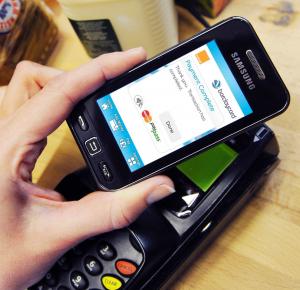Mobile NFC Facing Hurdles, Opportunities, Say Analysts

It will be three or four years before NFC-based payment becomes commonplace in smartphones—but those players that want to take advantage of the trend had better start partnering today.
Those were among the points brought out Tuesday in a Webinar, “Mobile NFC: Cutting through the hype,” from UK-based market research firm and conference organizer Informa Telecoms and Media. Senior analysts Guillermo Escofet and Shailendra Pandey presented the results of what they said were five months of research.
The total number of smart phones shipped with NFC should grow from 44 million this year to more than 630 million in 2015, the analysts predicted, assuming that Apple releases an iPhone with NFC next year. The number of active NFC or contactless-mobile users is expected to grow from 16.7 million this year to 250 million in 2015. While 95% of the active users are currently in Japan and South Korea, that ratio should fall to 70% in 2015, thanks to growth in other regions, they said. Japan uses a technology similar to NFC and plans to move to standard NFC phones in late 2012.
The analysts also predicted that the transaction value of mobile-NFC payments would rise from $2.4 billion this year to more than $71 billion in 2015. While more than 80% of the transaction activity was in Japan and South Korea in 2011, the ratio should fall below 40% in 2015, they said.
But while a lot of attention in the NFC market has been focused on contactless payments, Escofet noted that this attention has actually been detrimental since contactless payments offer the highest potential revenue but are the trickiest services to enable.
“How should the transactions be secured? Every player is pulling in different directions,” he noted. Differing plans put security at the server level, within the phone, or built into microSD cards, he said.
He added that operators have largely given up the idea of taking a cut of merchant-transaction fees for mobile-NFC payment. There are a few markets where telcos still plan to try to earn transaction fee, however.
Most operators are planning to charge rental fees for NFC applications secured on their SIM cards. And some operators have been talking about trying to earn fees from mobile-coupon redemption and through co-branding agreements with banks or other financial institutions.
But until the necessary infrastructure is in place, more immediate opportunities for telcos and other players will include public transportation and access control, and in marketing activities, such as coupons and loyalty programs, Escofet indicated.
Pandey also noted that the fragmented nature of the mobile-NFC market will restrict the growth of commercial services using the technology for the next several years or, “until they (players) can figure out whom to partner with,” he said.
He counted nine types of players in the market: payment-service providers, software vendors, authentication services, banks, mobile operators, handset vendors, payment networks, merchants, and hardware-component vendors.
“Mobile NFC has the potential to generate significant revenue in the long run, but right now the players need to be looking for other players to partner and collaborate with, to share the risks and the investments–that would be the key way to expect faster growth in this market,” Pandey said.
Meanwhile, the market will become even more fragmented if the participants do not keep interoperability uppermost in mind, he added.
In the end, the priority of everyone in the market should be to get NFC into phones, regardless of whether contactless-payment systems using the technology are in place yet, Escofet indicated. Once the technology is in place, developers and end users will create applications that use it, he predicted.
Escofet and Pandey also noted that. among Silicon Valley giants, Google's main interest in mobile NFC is as an advertising medium and Apple is the best positioned mobile player to exploit payment services because it already has a formidable payment infrastructure, thanks to its iTunes online retail system. Also, PayPal and other online payment platforms see NFC as a way to encroach on the turf of banks and card-payment networks and generally get involved in real-world payments, they said.
Other observers have noted that Apple has given no real sign that it wants to enter the payment market directly. They say PayPal will use different technologies–not only NFC–to make the jump to the physical point of sale. That PayPal-payment launch could happen before the end of the year, the observers say.












